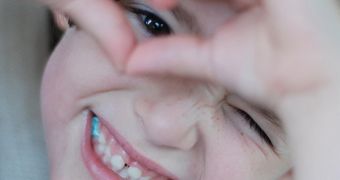Cardiac therapists have been dreaming of the day when a damaged heart will be repaired with the patient's own cells, and according to a new study, that day might not be so far away.
The results of this research, led by Sunjay Kaushal, MD, PhD, surgeon in the Division of Cardiovascular Thoracic Surgery at Children's Memorial Hospital and assistant professor of surgery at Northwestern University Feinberg School of Medicine, show that heart stem cells from children with congenital heart disease managed to rebuild the damaged heart in the laboratory.
These are some very encouraging results for all the children out there, who have congenital heart problems.
The research team obtained the heart stem cells from patients aged from barely a few days to 13 years, who were undergoing routine congenital cardiac surgery.
The results showed that the number of heart stem cells was much higher in neonates than in older kids, and it rapidly decreased with age.
Also, the highest number of these cells are located in the upper right chamber of the heart, called the right atrium.
Until now, heart cell studies have been focusing only on adult heart conditions, so this is the first and the largest systematic study to focus on children.
This research also showed that cardiac stem cells are functional and that they can be used in repairing the diseased heart.
Kaushal said that “heart disease in children is different than heart disease in adults.
“Whereas adults might suffer heart failure from coronary artery disease or atherosclerosis, heart failure in children primarily occurs because they acquire cardiomyopathy or have a congenital condition in which the heart chambers are small or in the wrong position causing the heart to pump inefficiently.
“The potential of cardiac stem cell therapy for children is truly exciting,” he added, and this means that the need for a heart transplant in children could be avoided.
“Due to the advances in surgical and medical therapies, many children born with cardiomyopathy or other congenital heart defects are living longer but may eventually succumb to heart failure,” the surgeon explained.
“This project has generated important pre-clinical laboratory data showing that we may be able to use the patient's own heart stem cells to rebuild their hearts, allowing these children to potentially live longer and have more productive lives.”
The FDA approval for this technique is pending, but Kaushal hopes to begin clinical trials with children in the fall.
The findings are published in the February issue of Circulation, a scientific journal of the American Heart Association.

 14 DAY TRIAL //
14 DAY TRIAL //